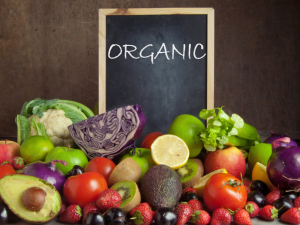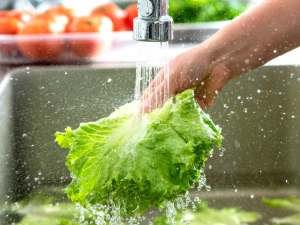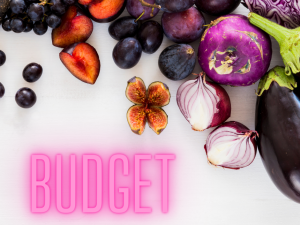It’s no secret that organic vegetables come at a premium price, but with a bit of sustainability and creative use of kitchen waste, you can still get the most out of your organic vegetable budget! In this blog post, we’ll look at 8 ways to use supposed kitchen waste in order to save on your organic vegetable bill. From carrot greens to potato peelings, cheese rinds and more, there are plenty of ways to make use of kitchen waste that would otherwise end up in the garbage. So let’s dive in and explore how you can turn kitchen waste into delicious dishes!
1) Root End and Greens of the Leek
Stop tossing out that organic waste and put it on your plate instead! Leeks are a great vegetable to experiment with. Most of us know the white part of the leek, but don’t throw away the dark green root end and greens – they’re chock full of vitamins and minerals. Not to mention, they have a delicious flavor that adds a punch of umami to any dish.
These parts of the leek are totally edible and are an excellent way to up your sustainable cooking game. Why buy expensive organic greens when you can use the ones you’ve already got? The root end and greens can be used to make a delicious veggie stock, or added to a stir fry for an extra hit of flavour. Don’t throw away your leek ends – cook them up and enjoy!
2) Cheese Rind
To eat or not to eat? That is the question when it comes to cheese rind. But don’t worry, there is a simple rule: naturally mature rind is edible. The special mould cultures used in the making of camembert or brie are all edible and add a lot of flavour to dishes. However, caution is advised with artificial rinds made of paraffin, wax or plastic, as these cheeses contain preservative E325.
Re-using cheese rinds is a great way to reduce organic waste and practice sustainable cooking. They make a great addition to soups and stews, lending them an extra depth of flavour. Try grating some hard cheese rinds over your salad or blending it into a pesto sauce! The possibilities are endless.
3) Broccoli and Cauliflower Stem
The forgotten part of the organic waste! When it comes to cooking broccoli and cauliflower, we often forget about the stem. We wash and cook the florets, but leave the stem aside. It’s time to give it some attention and make the most out of our sustainable cooking.
Simply peel, remove the woody parts and cut into slices. The taste of the stalk is reminiscent of green asparagus. Just add it to your meal. In the case of cauliflower, you should score it crosswise before cooking so that it cooks at the same time as the florets. This way, you’ll get a delicious and nutritious side dish.
You can make many delicious dishes with these supposed organic waste items like stir-fry with shredded broccoli stalks and cauliflower, veggie chips from the broccoli stem, roasted cauliflower stalks, or you can use them in soups or even pickle them. So next time when you are about to throw away these kitchen leftovers, remember that you can still make something good out of them.
4) Pumpkin Skin
Pumpkin skin might not be the most popular snack, but did you know that it is edible? Most of us throw away our pumpkin skin when cooking up a delicious pumpkin dish, but why waste this part of the vegetable when you can enjoy it? Eating pumpkin skin is not only a great way to get more vitamins and minerals into your diet, but it can also help you save on your organic vegetable bill.
Fun fact: Pumpkin skin is a great source of dietary fibre. That’s right, by adding some pumpkin skin to your dishes you will be getting more than just flavour. Plus, if you want to waste as little as possible when cooking pumpkin recipes, you have to choose the right pumpkin. With many types of pumpkin, you can eat the skin. Hokkaido pumpkins usually do not need to be peeled. They have thin skin that can be eaten. The skin of butternut pumpkin and jap pumpkin can also be eaten if is cooked for a long time or prepared as an oven vegetable. Smaller spaghetti squash can be cooked whole, larger specimens are better eaten without the skin. So next time you make a pumpkin dish, don’t be so quick to throw away that yummy skin!
5) Potato Peel
When you’re cooking with potatoes, the peel often goes in the bin. But there’s no need to throw it away – you can make delicious chips out of it!
First of all, make sure you give your potato peel a good wash – then put it on a baking sheet. Drizzle with a little olive oil, and sprinkle on some salt, pepper and herbs of your choice. Pop it in the oven at 200 degrees for around 10 minutes, and you’ve got some crunchy potato chips!
You can also use potato peel to add some extra flavour to your soup or stew – just throw it in while you’re cooking, and let the flavours blend. And if you’re feeling particularly daring, why not try out some potato peel fritters? A bit of mashed potato, some grated cheese, and a few herbs and spices – then fry them up until golden brown. Delicious!
So don’t be too quick to discard your potato peel – there’s a whole range of tasty treats that you can make out of it!
6) Greens from Radishes, Carrots, Beetroot and Fennel
It’s time to give those greens a second chance! Don’t let them go to waste – they’re too valuable! Radish leaves, beetroot leaves, fennel greens and carrot tops are all fantastic ingredients that can add a delicious punch to your meals.
Radish leaves are perfect for making a delicious pesto or adding to salads. Beetroot leaves make a great side dish when lightly cooked with olive oil and garlic. Fennel greens make a beautiful garnish for dishes and carrot tops can be blended into a tasty sauce or soup. So next time you’re chopping your vegetables, don’t be so quick to throw out those greens – you’ll be surprised at the delicious dishes you can create with them.
7) Orange Peel
The zest of the orange not only looks good, but it also tastes great. If you have organic oranges at home, you should put their skin to use. Dried orange peels can be easily brewed into a tea that will provide you with the many vitamins and minerals the skin contains. Grated, the peel can be used to give many dishes a fresh note – from salads to desserts. It can also be added to pastries for a slightly bitter flavour. The possibilities are endless, so don’t let that orange peel go to waste!
8) Apple Core
If you’ve ever made an apple pie or a crumble and thrown away the core, then this one is for you. Apple core is not only edible, but it is very healthy! That’s right, don’t worry about getting in trouble with your mom for not eating the core – our digestive system is happy with the dietary fibre it contains.
But wait – what about all those people who say that the seeds contain toxic hydrogen cyanide? Well, technically they are right – apple seeds do contain amygdalin which, when broken down by the body, produces hydrocyanic acid. But here’s the thing: unless you are crushing and chewing on them (which we don’t recommend!), the amounts released are too small to cause any real damage. So enjoy the core of your apples without any worries.
Final Thought
Making the most of kitchen waste and eating all parts of organic vegetables can not only help you save money but also enjoy a more sustainable lifestyle. Eating organic vegetables and fruits helps to preserve the environment, improve your health, and support the farmers who are dedicated to producing quality, nutritious food. Organic foods are often more expensive than conventional foods, so by using every part of the vegetable or fruit and making the most of it, you can make your grocery budget stretch further while still reaping the many benefits of organic foods. So next time you’re preparing a meal, try to see how many of the scraps you can use. You may be surprised at how much you can save!




